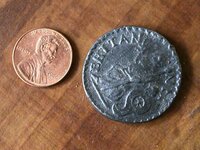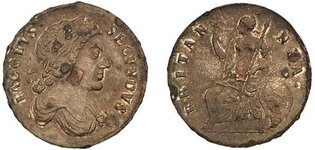jiminsandiego
Greenie
- Dec 18, 2010
- 19
- 0
found a cool "coin" at the beach
It's about the size of half dollar with brtitan nia and jacobus secundus on it. Trying to post a picture for the first time here.. so might not be an image
It's about the size of half dollar with brtitan nia and jacobus secundus on it. Trying to post a picture for the first time here.. so might not be an image

Attachments
Upvote
0











